What’s Up?
Thursday morning dawned still with the promise of more heat and more thunderstorms. Wildflower photography was great for about an hour until the breeze picked up. I did well with Yellow Milkwort. I was back home early and could not resist the 100+ perfect Whitemouth Dayflower blossoms in my front yard …
As noted here previously, I enjoyed a red-letter morning photo session here at ILE on May 16 with the then one-week-old crane twins. I finally got around to editing that folder and creating a Camtasia video of the 27-minute editing session. Remember, for me editing means picking my keepers. All six of today’s featured images were from that wonderful morning. Enjoy the sample video below and then consider purchasing the full video here.
The forecast for today — Friday 12 JUNE 2020 is sunny turning cloudy and then sunny in the late afternoon with no rain and no thunderstorms; I’ll believe that when I see it! I will be headed down to the lake at about 6:45am.
Your Favorite?
Which of today’s six featured images is your favorite? Please let us know why you made your pick. I will share my favorite image here in a future blog post.
BIRDS AS ART
BIRDS AS ART is registered in the U.S. Patent and Trademark Office.
The sample video above is comprised of the first three minutes of the full 27-minute video.
|
|
Picking Your Keepers: The 361 Sandhill Crane Chick Images Video |
Picking Your Keepers: The 361 Sandhill Crane Chick Images Video
Sit beside me as I work on my laptop picking 76 keepers from a very good 361-image morning session with the two very tame week-old Sandhill Crane chicks. Learn to pick the best image or two or three from a series of similar images. Learn the fine points. Learn to see what I am looking for. With today’s high frame-rate/high MP camera bodies, learning to edit tightly while identifying your very best images is an important skill.
Important note: during the third edit I deleted 36 additional images leaving me with 40 keepers from the great morning of 16 MAY.
To purchase the full video, click here.
SONY e-Guide Discount Program
Purchase a (new) qualifying SONY camera body (a7r iii, a7r iv, a9, a9 ii) from Bedfords or using a BIRDS AS ART B&H affiliate link, and you will receive a $40 discount on the SONY e-guide. Purchase a (new) SONY 200-600mm G lens from Bedfords or using a BIRDS AS ART B&H affiliate link, and you will receive a $25 discount on the SONY e-guide. Purchase a (new) SONY 600mm f/4 GM lens from Bedfords or using a BIRDS AS ART B&H affiliate link, and you will receive a free SONY e-guide with one or two videos.
Please send your Bedford’s or B&H receipts to me via e-mail to receive your discount and your ordering instructions. Folks purchasing from Bedfords and using the BIRDSASART code will save $50. Folks sending their B&H receipts may need to wait a few days to have their purchases confirmed. Folks using Bedfords will have their purchases confirmed immediately.
|
|
|
89 sold to rave reviews. The SONY e-Guide by Patrick Sparkman and Arthur Morris |
The Sony Camera User’s e-Guide (and Videos)
Click here to purchase the guide with one Camera Set-up Video. Be sure to e-mail us by clicking here to specify your camera body so that we can send you a link for the correct video.
Click here to purchase the guide with two Camera Set-up Videos. Be sure to e-mail us by clicking here to specify your two camera bodies so that we can send you links for the correct videos.
Click here to learn more about the SONY e-Guide.
Money Saving Reminder
If you need a hot photo item that is out of stock at B&H, would enjoy free overnight shipping, and would like a $50 discount on your first purchase over $1000.00, click here to order and enter the coupon code BIRDSASART at checkout. If you are looking to strike a deal on Canon or Nikon gear (including the big telephotos) or on a multiple item order, contact Steve Elkins via e-mail or on his cell at (479) 381-2592 (Eastern time) and be sure to mention your BIRDSASART coupon code and use it for your online order. Steve has been great at getting folks the hot items that are out of stock at B&H. Those include the SONY a7r IV, the SONY 200-600, the SONY 600mm f/4 GM, and the Nikon 500mm PF. Steve is eager to please.


Gear Questions and Advice
Too many folks attending BAA IPTs and dozens of photographers whom I see in the field and on BPN, are–out of ignorance–using the wrong gear especially when it comes to tripods and more especially, tripod heads… Please know that I am always glad to answer your gear questions via e-mail. Those questions might deal with systems, camera bodies, accessories, and/or lens choices and decisions.
|
|
|
This image was created on 16 MAY 2020 at Indian Lake Estates, FL. I used the Induro GIT 404L/FlexShooter Pro-mounted Sony FE 600mm f/4 GM OSS lens and the 61-MP Sony Alpha a7R IV Mirrorless Digital Camera Body. ISO 1000. Exposure determined by Zebras with ISO on the rear dial: 1/500 sec. at f/4 in Manual mode. AWB at 8:23am on a then-drizzly morning. Tracking Flexible Spot (M) AF-C was active at the moment of exposure and performed to perfection as the AF point tracked the chick’s right eye. Image #1: Sandhill Crane one-week-old chick stretching |
The 600 f/4 GM in Low Light
While the handheld 200-600 allows great freedom in moving about and easily getting a great perspective, it is relatively slow at f/6.3 and thus is not my number one lens choice in low light. On what started out as a cloudy, drizzly morning the 600 f/4 on the tripod was the obvious choice. Had I opted for the 200-600 I would have had to have been at ISO 2500 to get to 1/500 sec.
|
|
|
This image was also created on 16 MAY 2020 at Indian Lake Estates, FL. I used the handheld Sony FE 200-600mm f/5.6-6.3 G OSS lens (at 600mm) and the blazingly fast AF King, the Sony Alpha a9 II Mirrorless Digital camera body. ISO 640. Exposure determined by Zebras with ISO on the rear wheel: 1/640 sec. at f/6.3 in Manual mode. AWB at 8:32am on a suddenly somewhat sunny morning. Center Zone AF-C was active at the moment of exposure and performed superbly. Image #2: Sandhill Crane one-week-old chick standing on small rise |
The Handheld 200-600 for Easy Living
Handholding a telephoto zoom lens is an absolute pleasure as compared to working on a tripod with the 600mm f/4. In order to create this image with Lake Walk-in-Water as the background, I tried laying down in the grass on my side. The problem was, I had turned off the Viewfinder Level option so I had no idea where square-to-the-world was. This image needed more than five degrees of counter-clockwise rotation. Because the chick was pretty high in the frame, I only needed a bit of Content-Aware to fill in the triangle of needed canvas in the lower right. I went to Upper Center Zone for this one as my position was quite unstable; had I stayed with Tracking Flexible Spot (M) I would have had no chance in heck.
|
|
|
This image was also created on 16 MAY 2020 at Indian Lake Estates, FL. I used the handheld Sony FE 200-600mm f/5.6-6.3 G OSS lens (at 600mm) and the blazingly fast AF King, the Sony Alpha a9 II Mirrorless Digital camera body. ISO 500. Exposure determined by Zebras with ISO on the rear wheel: 1/1000 sec. at f/6.3 in Manual mode. AWB at 8:334am on a suddenly somewhat sunny morning. Tracking Flexible Spot M AF-C was active at the moment of exposure and performed superbly. Image #3: Sandhill Crane one-week-old chick preening |
I Came to My Senses
While on my side, I saw the second chick stand up to my right and begin preening so I sat up and scooched a yard or so to get right on sun angle. In just a minute, the sun had gotten much brighter and, after adjusting the exposure, I wound up with a richer blue background in Image #3 than in Image #2. Being more stable while seated I quickly switched to Tracking Flexible Spot (M) for just a bit more accuracy.
|
|
|
This image was also created on 16 MAY 2020 at Indian Lake Estates, FL. Again I used the handheld Sony FE 200-600mm f/5.6-6.3 G OSS lens (at 600mm) and the blazingly fast AF King, the Sony Alpha a9 II Mirrorless Digital camera body. ISO 640. Exposure determined by Zebras with ISO on the rear wheel: 1/500 sec. at f/6.3 in Manual mode. AWB at 8:35am on a then partly cloudy morning. Tracking Flexible Spot M AF-C was active at the moment of exposure and performed superbly. Image #4: Sandhill Crane one-week-old chick resting on grassy hill |
Chicks on the Rise
There is a small hill just to the right of the parking circle at the end of Park Drive here at ILE, right by the pier. Any time that there are birds on the small rise, it presents good opportunities for working with distant backgrounds such as those seen in Images 2 & #3. In Image #4, the small strip of out-of-focus green at the top of the frame is a big plus for me. And that goes double for the larger strip of out-of-focus green at the top of the frame in Image #5.
To get the perspective that I wanted for Image #4, I was lying flat on my belly.
|
|
|
This image was also created on 16 MAY 2020 at Indian Lake Estates, FL. Again I used the handheld Sony FE 200-600mm f/5.6-6.3 G OSS lens (at 600mm) and the blazingly fast AF King, the Sony Alpha a9 II Mirrorless Digital camera body. ISO 400. Exposure determined by Zebras with ISO on the rear wheel: 1/1250 sec. at f/7.1 in Manual mode. AWB at 8:41am on a then completely sunny morning. Tracking Flexible Spot M AF-C was active at the moment of exposure and performed superbly. Image #5: Sandhill Crane one-week-old chick resting on bed of plants with tiny white flowers |
SONY Zebras Rock in Changing Light!
Notice that the light level in each of today’s six featured images was different. Exposures ranged from ISO 1000 — 1/500 sec. at f/5.6 (for Image #1) to ISO 400 — 1/1250 sec. at f/7.1 (for Image #5). Working with ISO on the Control Wheel and Patrick Sparkman’s recommended Zebra values enables SONY users to consistently and quickly come up with perfect or near-perfect exposures. Pick your shutter speed and aperture and then simply adjust the ISO until you see Zebras (live in real times in the viewfinder!) All this is done before you press the shutter button. In the guide, we explain how using Zebras when the sun is shining differs from using Zebras in low light.
Image Design Question
Why did I opt to sit while creating Image #5 rather than to lie down flat as I had done in Image #4?
|
|
|
This image was also created on 16 MAY 2020 at Indian Lake Estates, FL. For this one made near the end of the session, I used the Induro GIT 404L/FlexShooter Pro-mounted Sony FE 600mm f/4 GM OSS lens, the Sony FE 2.0x Teleconverter, and the 61-MP Sony Alpha a7R IV Mirrorless Digital Camera Body. ISO 1000. Exposure determined by Zebras with ISO on the rear dial: 1/400 sec. at f/9 in Manual mode. AWB at 9:14am on a then somewhat cloudy morning. Tracking Flexible Spot (M) AF-C was active at the moment of exposure and performed better than the operator — this image needed a healthy crop from the right and from above. Image #6: Sandhill Crane one-week-old — head portrait showing tongue |
SONY at 1200mm!
As I love working clean, tight, and graphic I enjoy the superb performance of the SONY 600 GM with the 2X TC. As you have seen on the blog, flight photography at 1200mm is viable.
If In Doubt …
If you are in doubt about using the BAA B&H affiliate link correctly, you can always start your search by clicking here. Please note that the tracking is invisible. Web orders only. Please, however, remember to shoot me your receipt via e-mail.






Please Remember to use my Affiliate Links and to Visit the BAA Online Store 🙂
To show your appreciation for my continuing efforts here, we ask, as always, that you get in the habit of using my B&H affiliate links on the right side of the blog or Bedfords, for all of your photo and electronics purchases. Please check the availability of all photographic accessories in the New BIRDS AS ART Online Store, especially the Mongoose M3.6 tripod head, Wimberley lens plates, Delkin flash cards and accessories, and LensCoat stuff.
As always, we sell only what I have used, have tested, and can depend on. We will not sell you junk. We know what you need to make creating great images easy and fun. And please remember that I am always glad to answer your gear questions via e-mail.
I would, of course, appreciate your using our B&H affiliate links or Bedfords for all of your major gear, video, and electronic purchases. For the photographic stuff mentioned in the paragraph above, and for everything else in the new store, we, meaning BAA, would of course greatly appreciate your business. Here is a huge thank you to the many who have been using our links on a regular basis and those who regularly visit the New BIRDS AS ART Online Store as well.
Be sure to like and follow BAA on Facebook by clicking on the logo link upper right.
Typos
In all blog posts and Bulletins, feel free to e-mail or to leave a comment regarding any typos or errors. Just be right :).

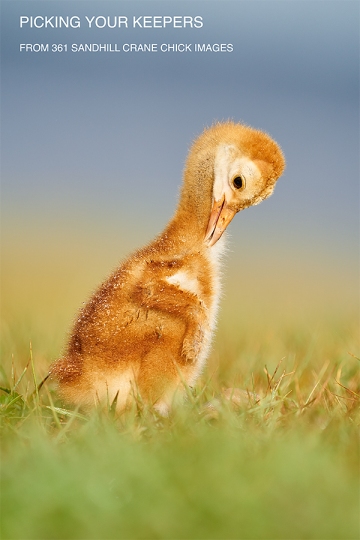
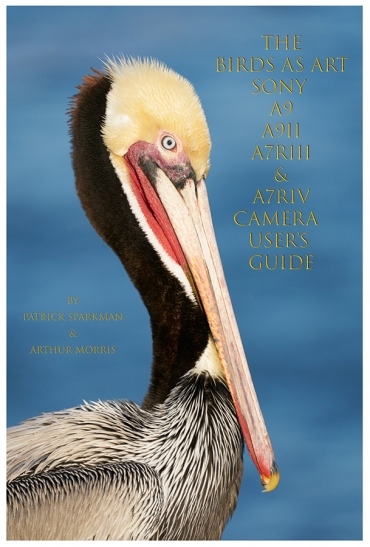

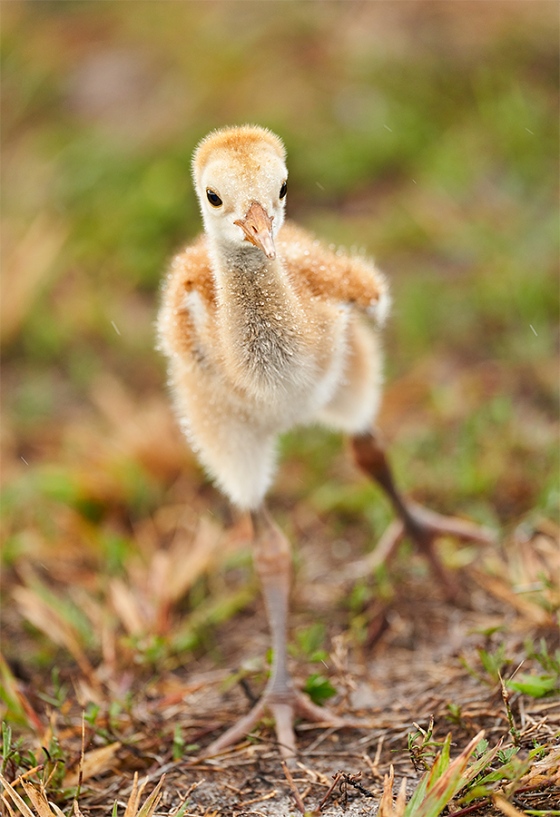
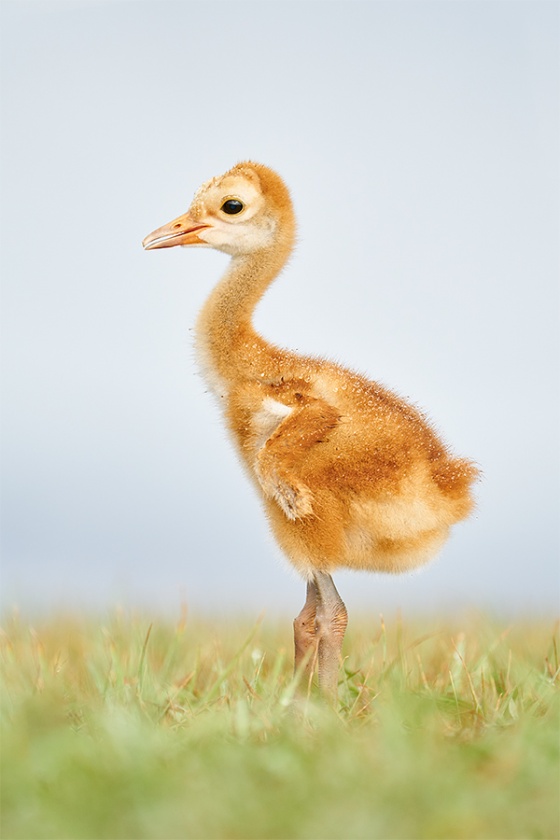
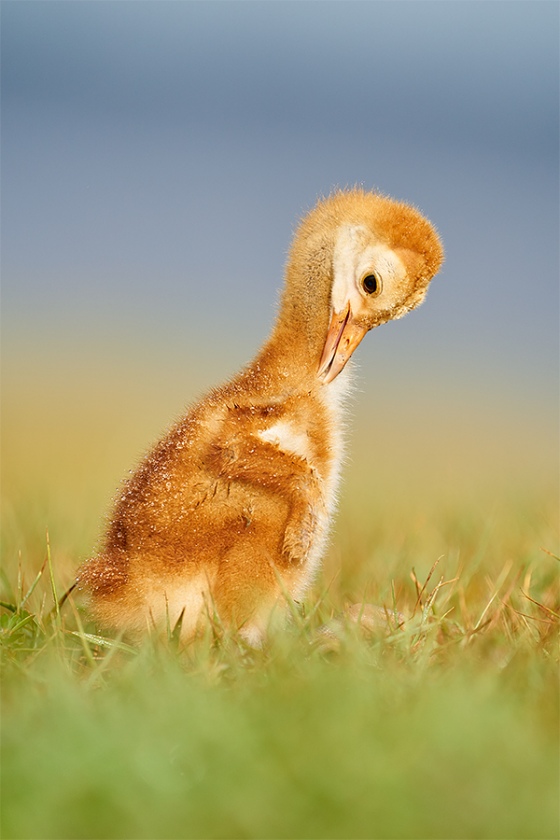
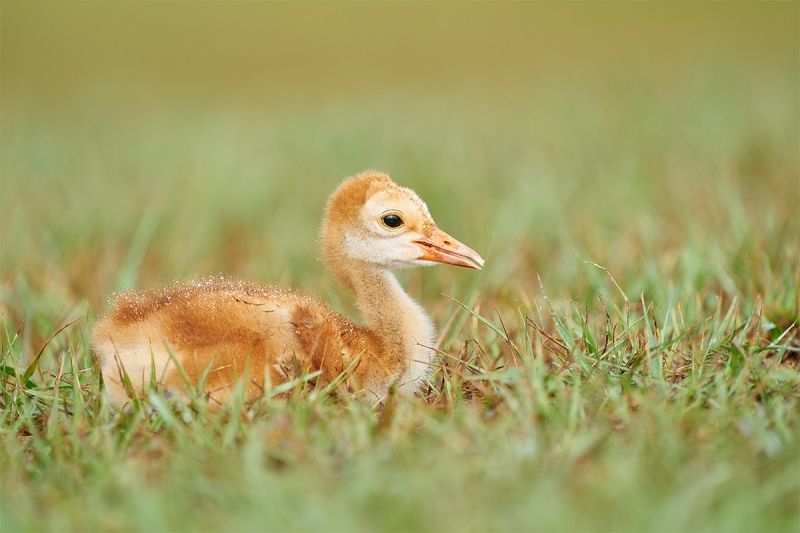
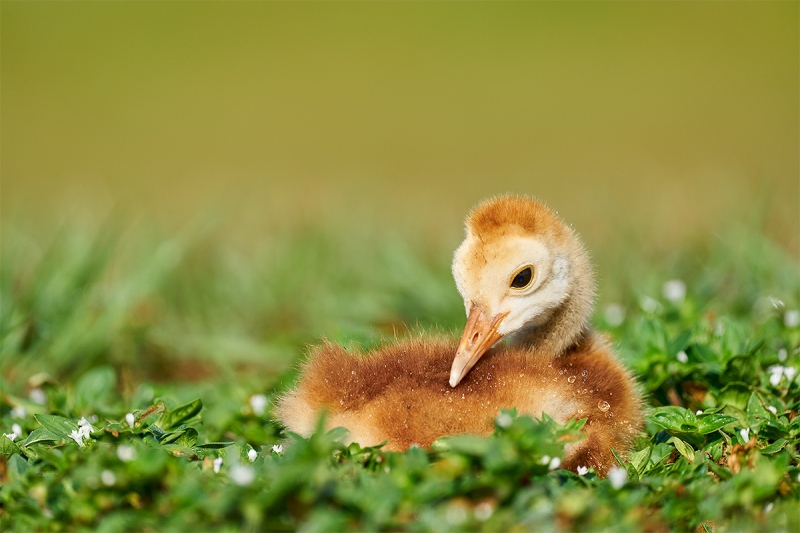
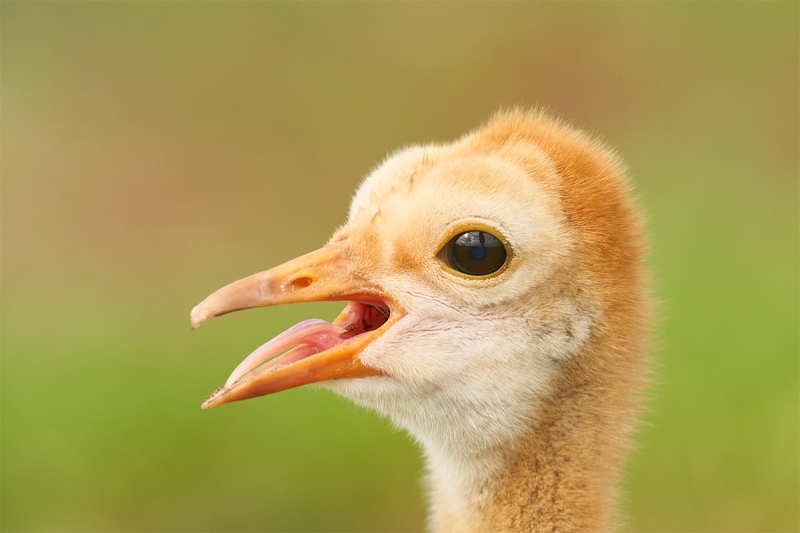













I like #2…it shows, closeup, all the myriad details of its body.
#3 followed by #5. As you’ve observed, the 200-600 is a pretty amazing lens for a variety of reasons; price, IQ, internal zoom, portability, ability to hand hold, etc. For me the 200-600 is the best all utility, wildlife, walkabout lens in spite of its limitations.
Artie, image 3 for me. I love the pose , head angle etc but the nice deep blue background at the top of frame makes it for me.
Image #5 is my favourite, I like the vegetation it is lying in, I like the little white flowers, I like the water droplets on the chick, and I like the head angle of the chick!
Interesting and fun to see! I don’t video but I do take many photos of one bird because of moving and turning and changing looking area like your’s was doing! Thanks for your interesting and “teaching” emails!
Image 3 is my favorite. I was drawn to the downward angle of the head flowing into similarly angled winglet.
Thank you, sir!
a
So you could get both the top of the head sharp and sharp on the flowers the chick was down in? Plus be a little more parallel to the bill? Parallel was an angle down. With the side view of the chick in #4, lying down, you were parallel to the whole side of the chick.
Nope …
a